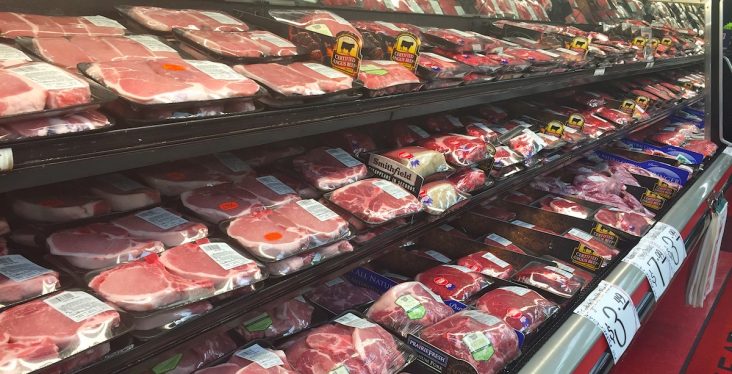Food inflation continues to pressure consumer households
by January 12, 2023 4:39 pm 794 views

Consumers are still paying an average of 11.8% more for the food bought at U.S. grocery stores compared to the same time last year, according to the December Consumer Price Index data released Thursday (Jan. 12).
Consumers have seen some relief at the gas pump in the past few months. Fuel prices fell 9.4% in December from the previous month and they were 1.5% cheaper than in December 2021, according to the U.S. Bureau of Labor & Statistics (BLS).
Overall food prices rose 0.3% in December from the prior month, up 10.4% higher year-over-year. Higher grocery prices are being led by price increases in eggs that are 60% more than a year ago. Butter prices rose 31.4% for the year in December to an average of $4.81 per pound. Butter substitutes like margarine costs were up 43.8 % in December, down slightly from 47.4% in November compared to a year before, BLS reports.
Kroger CEO Rodney McMullen this week on CNBC that egg price inflation is directly related to avian flu that forced millions of laying hens to be killed causing a shortage in egg supplies. He said the good thing about chickens is that they are one of the fastest to replenish with a shorter growing cycle relative to other animals. He said the laying hens are in the midst of being replenished and there could be some added egg supplies by late spring. The nation’s largest egg producer Cal-Maine said this week more than 43 million birds slaughtered due to avian flu were laying hens. Egg supplies in mid-December were down 20% from the prior year, the lowest level since 2014.
Steve Morrow, manager of Allen’s Foods in Bella Vista, said he has never seen egg prices this high in the 47 years he has been in the grocery business.
“We work with a number of smaller suppliers because of the expanded gluten-free section in our store. I was able to find a supplier and offer eggs at $1 per dozen cheaper than any of my competitors because of my supplier relationships. The Clearly Cage-free branded eggs are selling well in the store,” Morrow said.
The Labor Department said lettuce costs jumped 4% between November and December and meat prices were up 1% in December from the prior month. Cereal and bakery prices rose 16.1% year over year, meat and chicken prices rose 7.7%, and dairy and related products were up 15.3%.
McMullen said food inflation has been made worse from the higher corn and other grain costs resulting from Russia’s invasion of Ukraine, higher transportation costs, and severe drought in Brazil that reduced crop yields by 33% last year. Companies slower to the pass along the costs are doing so now. Morrow said consumers are shopping smarter than they have done in decades, looking for value and sales to stretch their budgets.
“When I first started in the grocery business people shopped with lists and rarely deviated. I see more of that purposeful shopping, the sales and stocking up when there’s a really good value,” he added.
Outside of grocery price inflation, some areas of the economy did see prices drop according to the CPI report. Overall prices receded 0.1% in December from the prior month, while rising 6.5% year-over-year. Used car prices were down 2.5% in December from November and fell 8.8% from a year ago. Shelter costs rose 0.8% in December from the prior month, jumping 7.5% from a year ago. Transportation costs rose 0.2% month over month while rising 14.5% year over year.
